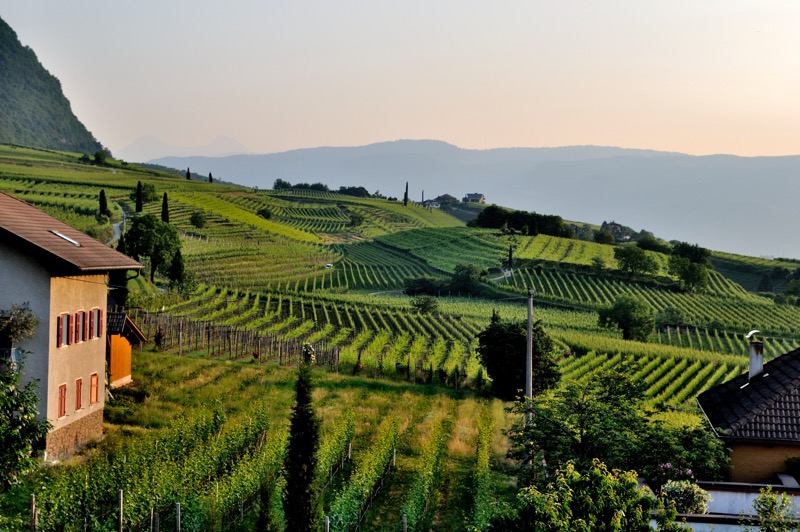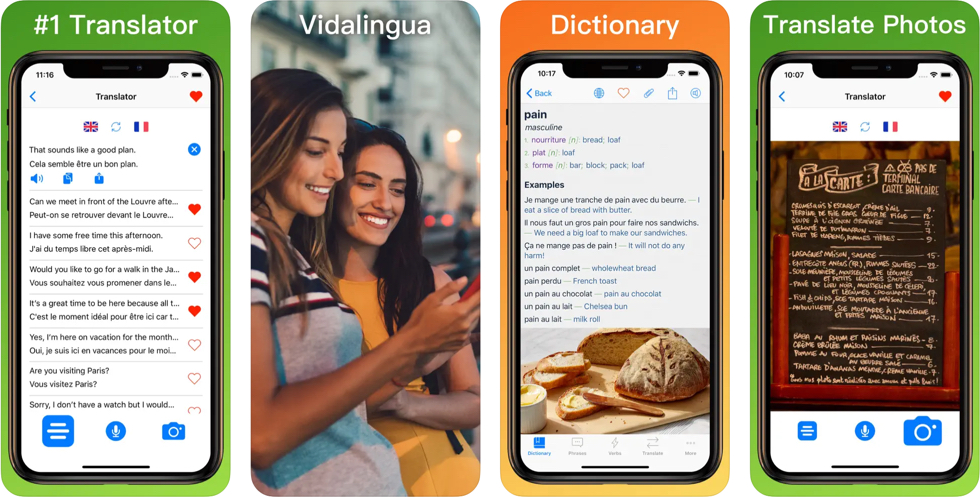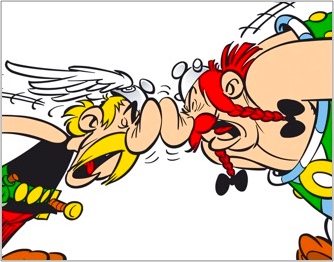62 Traditional French Dishes and Desserts
Fancy some French cuisine? French food is known for being one of the best in the world. Each of France 18 regions offers a wide
variety of delicious traditional French dishes and desserts. When eating at a French restaurant, you may
choose to go for a Menu Tradition or Découverte, a Formule or À la carte. Ordering French meals can turn out to be quite tricky so here are the main French dishes and desserts that you might want to understand!
French cuisine is celebrated globally for its finesse and flavor, encapsulating a rich tradition that dates back centuries. At its heart, French cooking is about harnessing the best of local ingredients to create an array of dishes that are as diverse as the regions of France itself. From the robust, wine-infused stews of Burgundy to the light, seafood dishes of the Mediterranean coast, each geographic area offers its unique specialties.
Central to French culinary philosophy is the concept of "terroir," the belief that the local environment—soil, climate, and geography—profoundly affects the taste of the food. This is evident in the country's careful selection of cheese and wine, which are among France's most famous exports.

French meals often consist of three courses—a starter (entrée), main course (plat principal), and a cheese course or dessert, accompanied by bread and wine. Presentation is as important as the cooking process, reflecting the French penchant for artistry in every aspect of life.
Techniques such as braising, poaching, and sautéing are frequently employed, refined over generations to elevate even the simplest ingredients. Iconic dishes like coq au vin, bouillabaisse, and ratatouille not only reflect the diversity of French regions but also the sophistication of its cuisine, making dining a central part of French culture.
France has been the birthplace of numerous culinary legends, each contributing uniquely to the world of gastronomy. Auguste Escoffier revolutionized French cooking in the late 19th century, streamlining kitchen operations and introducing the concept of the à la carte menu. Paul Bocuse, renowned for his high standards and innovative approaches, is often credited with the development of Nouvelle Cuisine, which emphasized lighter dishes and more intricate presentation. More contemporary chefs like Alain Ducasse and Joël Robuchon have continued this tradition of excellence, earning multiple Michelin stars for their restaurants globally.
If you are planning to have lunch or dinner at a French restaurant, download French Translator & Dictionary + on your iPhone or Android and take the following list of classic French food with you!


Appetizer / Entrée
Accras de morue or de légumes: Spicy cod fish or vegetable fritters
Coquilles Saint-Jacques: Scallops poached with mushrooms in white wine and gratinéed
Cuisses de grenouille: Frog legs fried with garlic and herbs (parsley, thyme)
Escargots: Snails baked in their shell with parsley and garlic butter
Foie gras: Duck or goose liver prepared into pâté
Œufs en meurette: Poached eggs in red wine sauce
Pâté en croûte: Pâté in a pastry crust
Soupe à l’oignon: Onion soup with bread served gratinéed with cheese on top
Soupe au pistou: Bean soup with lots of fine-chopped basil and garlic
Terrine de porc/sanglier/lapin/lièvre/canard: Pâté made with pork/wild boar/rabbit/hare/duck
Main course / Plat principal
Aligot: Mashed potatoes with melted fresh tomme cheese
Andouillette: Sausage made with chitterlings
Baeckeoffe: Mix of sliced potatoes and onions, cubed mutton, beef, and pork
marinated overnight in white wine and slow-cooked in oven
Blanquette de veau: Veal stew in white wine and crème fraîche sauce
Bœuf Bourguignon: Beef stew in red wine
Boudin aux pommes: Blood sausage made from pig’s blood and fat with apples
Bouillabaisse: Stew of mixed Mediterranean fish with tomatoes and herbs
Brandade de morue: Mashed potatoes with salt cod, garlic and chives
Carbonade: Braised beef cooked into beer with vegetable, garlic and herbs
Cassoulet: Thick stew with white kidney beans, pork sausage and preserved duck or goose
Choucroute: Sauerkraut (fermented cabbage) with sausages, salt pork and potatoes
Chou farci: Cabbage stuffed with meat
Confit de canard ou d’oie: Crispy preserved duck or goose cooked in its own fat
Coq au vin: Rooster braised in red wine with lardons and mushrooms
Daube: Braised beef cooked into red wine with vegetable, garlic and herbs
Encornets farcis: Squids stuffed with sausage meat and herbs
Flammeküche: Pie with thick layer of crème fraîche, lardons and onion
Fondue Bourguignonne: Pieces of beef dipped into a fondue pot filled with hot oil
Fondue Savoyarde: Cubes of bread dipped into a fondue pot filled with cheese and white wine
Gougère: Cheese in choux bun
Gratin dauphinois: Oven potatoes with garlic and crème fraîche
Hachis Parmentier: Mashed potatoes on top of a layer of minced meat served gratinéed
Jardinière de légumes: Vegetable stew
Magret de canard au miel: Duck breast fillet served with honey sauce
Moules marinières: Mussels marinated in white wine broth with parsley and shallots
Navarin d’agneau: Lamb and vegetable stew
Pissaladière: French version of the pizza covered with onions, olive
Pot-au-feu: Vegetables and cuts of meat boiled in a savory broth
Poule au pot: Chicken stuffed with vegetables and meat boiled in a savory broth
Quenelle: Flour, butter, eggs, milk and fish mixed and poached
Quiche Lorraine: Pie with lardons and lots of cheese
Ratatouille: Vegetable stew with aubergines, courgettes, tomatoes, peppers, onions and garlic
Ris de veau: Calf sweetbread cooked with mushrooms in a creamy sauce
Rognons de veau flambés: Veal kidneys, usually in mustard sauce, flambéed with cognac
Sole meunière: Flavour coated sole in butter sauce with capers
Tartare de bœuf: Finely chopped raw beef mixed with onions or shallots, capers, pickles, served with egg yolk
Tarte flambée: Pie with thick layer of crème fraîche, lardons and onion
Tartiflette: Potato gratin with Reblochon cheese, cream and pork
Tripes à la mode de Caen: Chitterlings cooked in cider and calvados
Tripoux: Tripe braised with herbs
Truffade: Potatoes sautéed with garlic and fresh tomme cheese
Dessert / Dessert
Clafoutis: Thick flan-like batter with fruit, traditionally black cherries
Crème brûlée: Custard topped with caramelized sugar
Crêpe Suzette: Pancake with Suzette butter served with a caramelized sugar and butter sauce, with tangerine or orange juice, flambéed with Grand Marnier or Blue Curacao
Île flottante: Stiffly beaten egg whites on cold custard, covered with caramel
Kouglof: Traditional Alsatian brioche cake with almonds
Kouign-amann: Flaky pancake with high proportion of butter
Moelleux au chocolat: Chocolate cake with melted chocolate heart
Pain perdu: Bread soaked into a milk and egg mix, then fried in butter
Profiteroles: Choux buns filled with vanilla ice cream, whipped cream or pastry cream, and smothered in hot chocolate sauce
Saint-Honoré: Puff pastry base, topped with pastry cream and whipped cream, surrounded by choux buns dipped in caramelized sugar
Tarte Tatin: Upside-down apple tart served with crème fraîche
Also, remember that when the waiter asks "Quelle cuisson pour votre viande ?” (How you would like your meat?), she/he is asking how cooked you want it.
There are several options:
• Bleue: very rare (practically uncooked!)
• Saignante: rare
• À point: medium rare
• Bien cuite: well-cooked
If we missed one of your favorite French dishes or desserts, don't hesitate to email us at
info@vidalingua.com to let us know.
Sometimes you don't have the time to cook an authentic French meal or spend the money to go to a French restaurant. But you still need to eat healthy. The folks at Hellofresh offer a plant-based meal kit delivery service that won't break the bank.
If you like this article, please share it with a friend using the buttons below.
Bon appétit !

Christine Ducos-Restagno
French Linguist VidaLingua

Do you want to speak French like a native? Mastering French idioms can help. Idioms are expressions with meaning beyond their literal translations.

Have you ever heard the words 'putain', 'merde', 'bordel' in France or 'tabarnak' in Quebec? You can't say you speak French if you don't know some swear words.

Even French people struggle and make mistakes with conjugation. Not surprising when you know that there are about 12,000 French verbs!
Have you written an article that might interest our readers? Email info@vidalingua.com